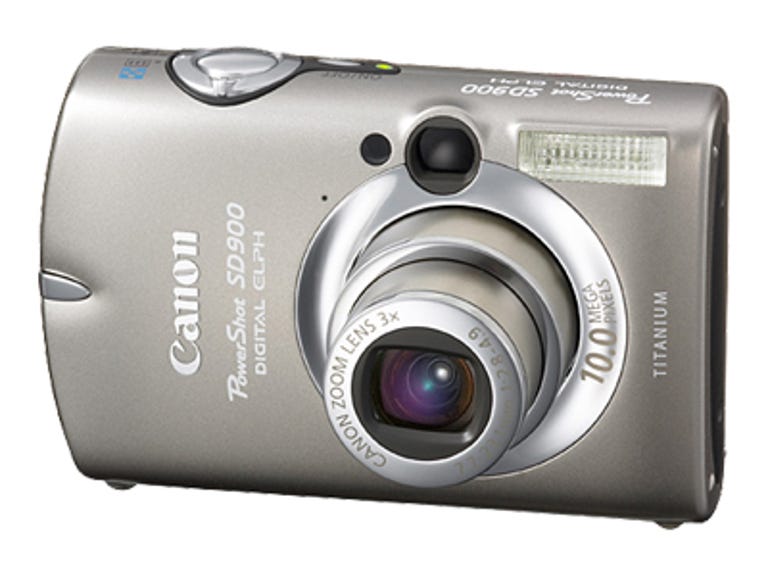 Why You Can Trust CNET
Why You Can Trust CNET Canon PowerShot SD900 review: Canon PowerShot SD900
Canon PowerShot SD900
While the SD900 is heavy on style, like most of the SD series, it's pretty light on features. You can adjust the white balance, the exposure compensation, the ISO sensitivity, and the metering settings, but in true point-and-shoot fashion, most shooting happens with the camera in automatic mode or through its handful of scene presets. It offers 30fps VGA movie capture or XGA (1,024x768) movies at 15fps.
The Good
The Bad
The Bottom Line
Unlike the SD800 IS, with its relatively fast, wide-angle lens, the SD900 sports a rather mundane f/2.8-to-f/4.9, 37mm-to-111mm-equivalent model. It features the recent Digic III image processor, which Canon claims improves performance, image quality, and battery life over the previous chip. We've haven't seen any significant improvement over past-generation cameras, but the SD900's predecessors, the SD600 and the SD630, already boast strong performance and image quality.
The Canon PowerShot SD900 is a moderately fast shooter, especially for a 10-megapixel model. After waiting 1.3 seconds from power-on to first shot, we managed to snap one photo every 2.3 seconds. With the onboard flash enabled, that wait increased to a still-respectable 3 seconds. The shutter felt quite responsive, lagging only 0.5 second in bright light and 0.9 second in dim conditions. Burst mode was predictably slow, shooting a full-resolution photo once every 0.9 second.
(Shorter bars indicate better performance)
| Typical shot-to-shot time | Time to first shot | Shutter lag (typical) |
(Longer bars indicate better performance)
| Typical continuous-shooting speed |
The camera generally produces very solid photos. They're extremely sharp in the center, though like many competitors' shots, there's severe softness around the edges of the frame, which can result in glowy edges on objects. Colors are a little cool but nicely saturated. As is typical of Canon cameras, the automatic white balance can't handle our warm tungsten lights. Noise was negligible to as high as ISO 400, and at ISO 800 became a tolerable, fine grain. ISO 1,600 images were predictably bad, with details hidden and colors muted by a pronounced layer of staticky, sparkly artifacts.
A solid, handy, compact camera, the Canon PowerShot SD900 nevertheless lacks some useful features offered by the similarly priced SD800 IS. Unless you absolutely need the extra pixels--for, say, cropping tightly on a portion of a photo or printing to larger than 8x10--you're probably better off with the faster, stabilized SD800 IS.
